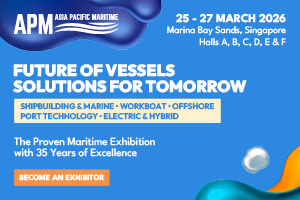Digitalisation in shipping and logistics is riding on disruptive technologies such as Block Chain and Artificial Intelligence that have the power to massively improve our capability to deliver goods and services
Inna Kuznetsova, President and COO
Peter Spellman, Chief Technology Officer
Karim Jumma, Interim Head of Product Management and Vice President, for New Products Development, INTTRA
Digitalization is impacting every industry and ocean container shipping is no different. The latest trends have organizations focusing on smart, technology-driven management to reduce expenses and increase efficiency. Artificial Intelligence (AI), Machine Learning (ML), IoT and blockchain are the most talked about transformative and disruptive technologies.
These technologies will massively improve our ability to deliver goods and services, as they’re applied to every step of shipping, from land-side to terminals to ocean. Digitalization will ultimately connect buyers and sellers, automate paper trails, and improveworking capital through centralized settlements. The opportunity to tie the physical operating process to the digital financial operating process will accelerate to deliver on the promise of digitalization.
INTTRA is the largest neutral digital transaction network in the ocean container shipping industry, with more than 800,000 container orders initiated over INTTRA’s platform weekly through more than 60 carriers. The company manages over one quarter of global container volume, with additional visibility into nearly 40 per cent of global container trade.
Artificial intelligence is the concept of machines accomplishing tasks that have historically required human intelligence. While AI has the potential to massively disrupt the container shipping industry, today’s applications will assist in jobs rather than replace jobs. For example, scientists at MIT illustrated how Google’s image-recognition AI could be fooled into believing a baseball was an espresso or a cat was guacamole through slight distortions that humans would instantly recognize.
The results show that AI programs are susceptible to misidentifying objects that are slightly distorted, whether manipulated intentionally or not. This echoes an earlier study showing Google’s AI could identify cats in videos in more than 70 per cent of cases, yet a human child could identify them in 100 per cent of cases.
AI programs will continue to advance, but their weaknesses illustrate why humans will remain a critical part of AI implementations as they’ll be required to handle exceptions and higher-end tasks, ones that require creative and original thinking, as well as ones requiring leadership roles.
AI promises to improve efficiencies in ocean container shipping, but many fear it will lead to a loss of jobs; however, it’s much more complex than that. McKinsey Global Institute estimates that up to 800 million global workers could lose their jobs by 2030 due to automation; meanwhile, Gartner suggests that by 2020 AI will automate 1.8 million people out of work, but it will create 2.3 million new jobs, adding that “AI will improve the productivity of many jobs, and, used creatively, it has the potential to enrich careers, reimagine old tasks and create new industries.”
Anything that can be standardized can be automated
AI will lead to a shifting in the types of jobs performed, and in the process create more opportunities. In IT there is a belief that anything that can be standardized can be automated, but one of the challenges in container shipping is there are a high number of exceptions. AI will allow workers to focus more of their time on those exceptions.
The past is often the best predictor of the future. When cars replaced horses, few predicted the emergence of the automobile industry and the resulting massive new job creation, as well as the birth of the entire trucking and shipping industry that drives logistics. Another disruption occurred with the invention of pallets and then the modern shipping container, which many feared would lead to increased job losses. Because of that, decades back drivers delivering pallets were required to unpack them and then have the contents packed onto pallets again in an effort to preserve jobs they thought were threatened. That inefficiency ended for obvious reasons, yet the number of employees in global shipping and maritime skyrocketed. There are approximately 1.2 million people currently employed in the maritime industry. The fear was unfounded. Pallets and then shipping containers helped expand container shipping and foster globalization.
Artificial Intelligence and Machine Learning will help remove additional inefficiencies in the system by directing technology at areas that can be easily standardized. This includes the pre-filling of various forms, or aspects of customer service at the searchengine level to help customers find information and sources before they speak with a client. Shipping is always full of exceptions due to human error, weather interference and unexpected events. Humans are better at dealing with exceptions, so the role of AI in logistics is to free up workers for higher level tasks that will help clients.

The building blocks to AI
AI offers a few different dimensions that rest on the foundation of recent technologies to help answer two key questions enabling digitalization and eventually AI:
- Can I store it?
- Can I process it?
In answer to the first question, we can now save virtually every piece of data using a simple cloud solution such as Amazon Web Services. This enables organizations to accumulate data at a reasonable cost, to the point where they can keep and store all the data they touch, and because they can keep and store all the data they touch, they can then reason with it. This enables one of the great benefits of Artificial Intelligence known as Machine Learning, which leads to the promise of improved efficiency through predictive analytics. So connecting the technology dots to get to AI starts with digitalization, which is happening now.
Applications for AI in container shipping – today and tomorrow
One very real, near-term initiative that incorporates AI are chatbots using NLP, or Natural Language Processing. INTTRA is exploring enhancing its cloud solutions with chatbots to further enhance a customer’s experience. They won’t replace workers, but instead will give users a more efficient way to interact through chat for support before talking to a human. Chatbots represent the early face of AI and will impact all areas where there is communication between humans. The growth in chatbots across all industries will be explosive. According to Gartner, by 2021, more than 50 per cent of enterprises will be spending more per year on bots and chatbot creations than traditional mobile app developments.
Gartner projects that by the end of this decade, the average person will have more conversations with virtual assistants or bots than with immediate family. Such penetration of artificial intelligence will depend on further advances in the technology to become smarter and easier to interact with. While many expect this progress to occur from advances in machine learning and deep learning, there are new techniques being introduced as well.
Imagine an AI application that configures forecasts with an automated, conversational interface. By looking at a customer’s previous bookings, the AI app could see the customer had three flavors of bookings, enabling the parameters to be automatically prefilled because the application learned from past behaviors. This will allow organizations to improve the booking process while freeing support people to focus on higher tasks.
In the future, AI will increasingly help with other critical tasks while working in conjunction with humans. One area is with Harmonized System (HS) codes, which is based on an international standard that classifies traded products. An error in the HS code, which is not uncommon, can cause significant delays and increase costs. AI coupled with MR will be able to correct many of these errors upfront by assigning the proper HS codes, only involving humans on exceptions that can’t be easily resolved.
Another area AI will help is with smart containers. AI and IoT will allow reefers to be monitored and handled remotely, increasing and decreasing temperature and air flow as required. The AI-enabled system will only involve humans for exceptions.









